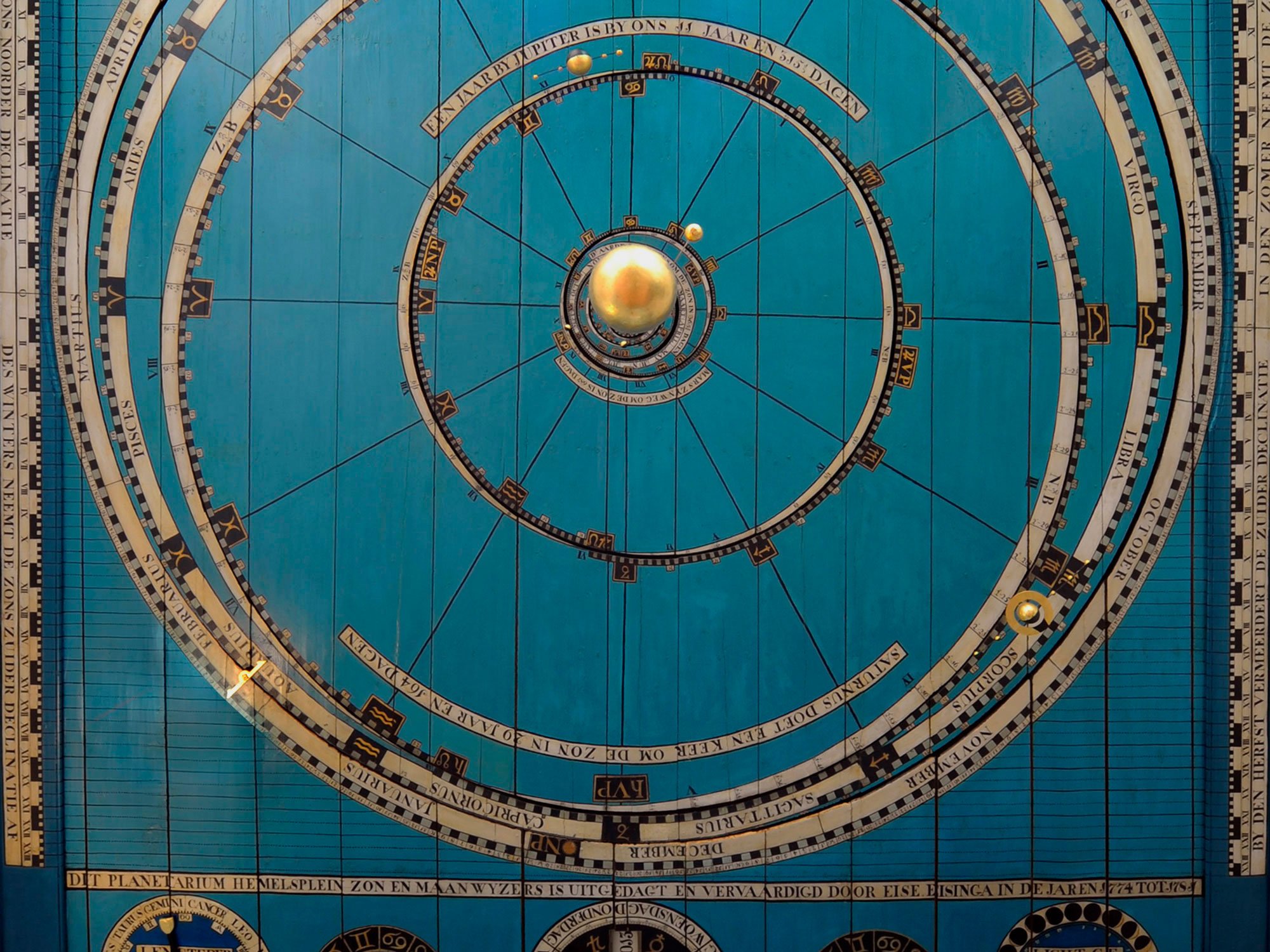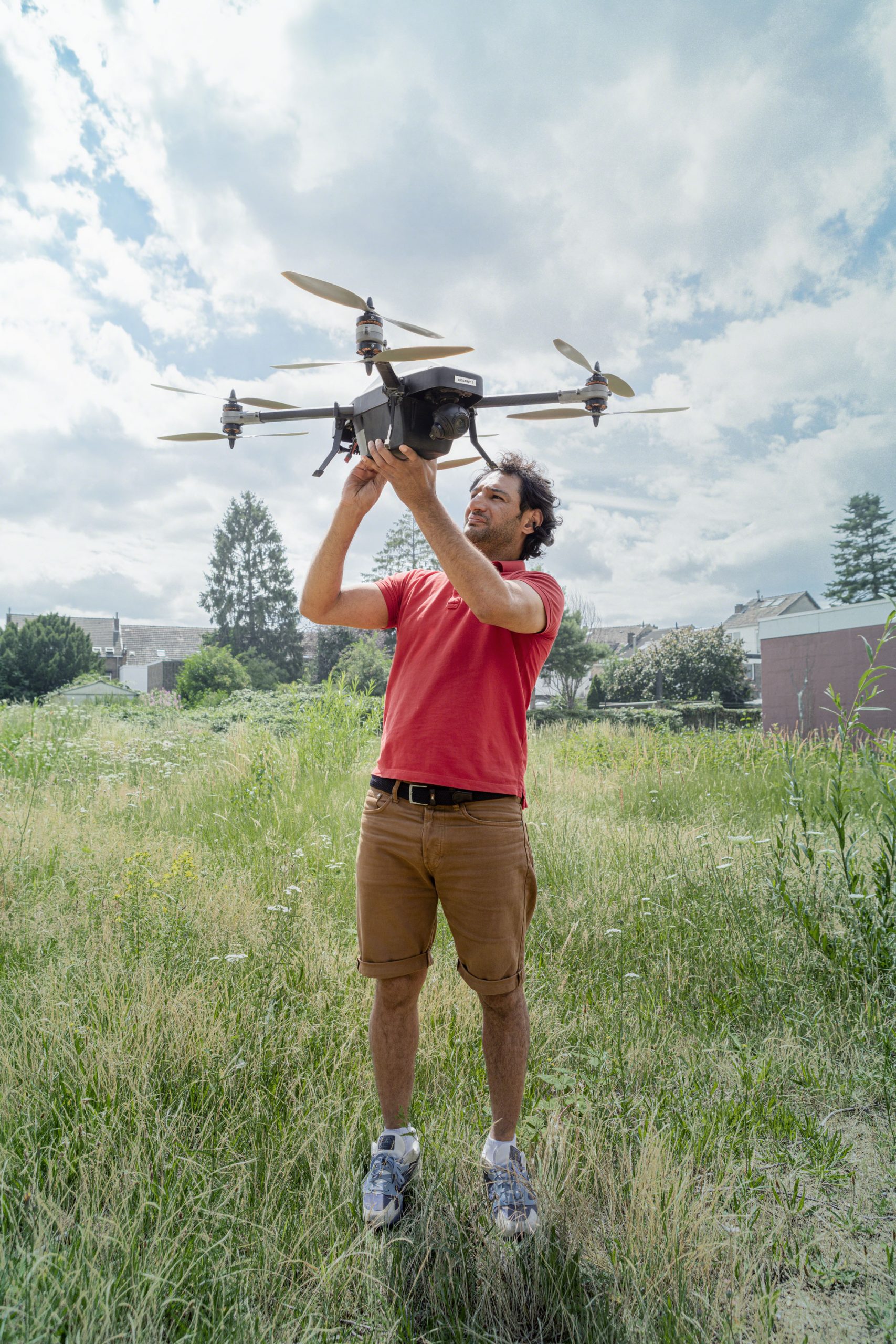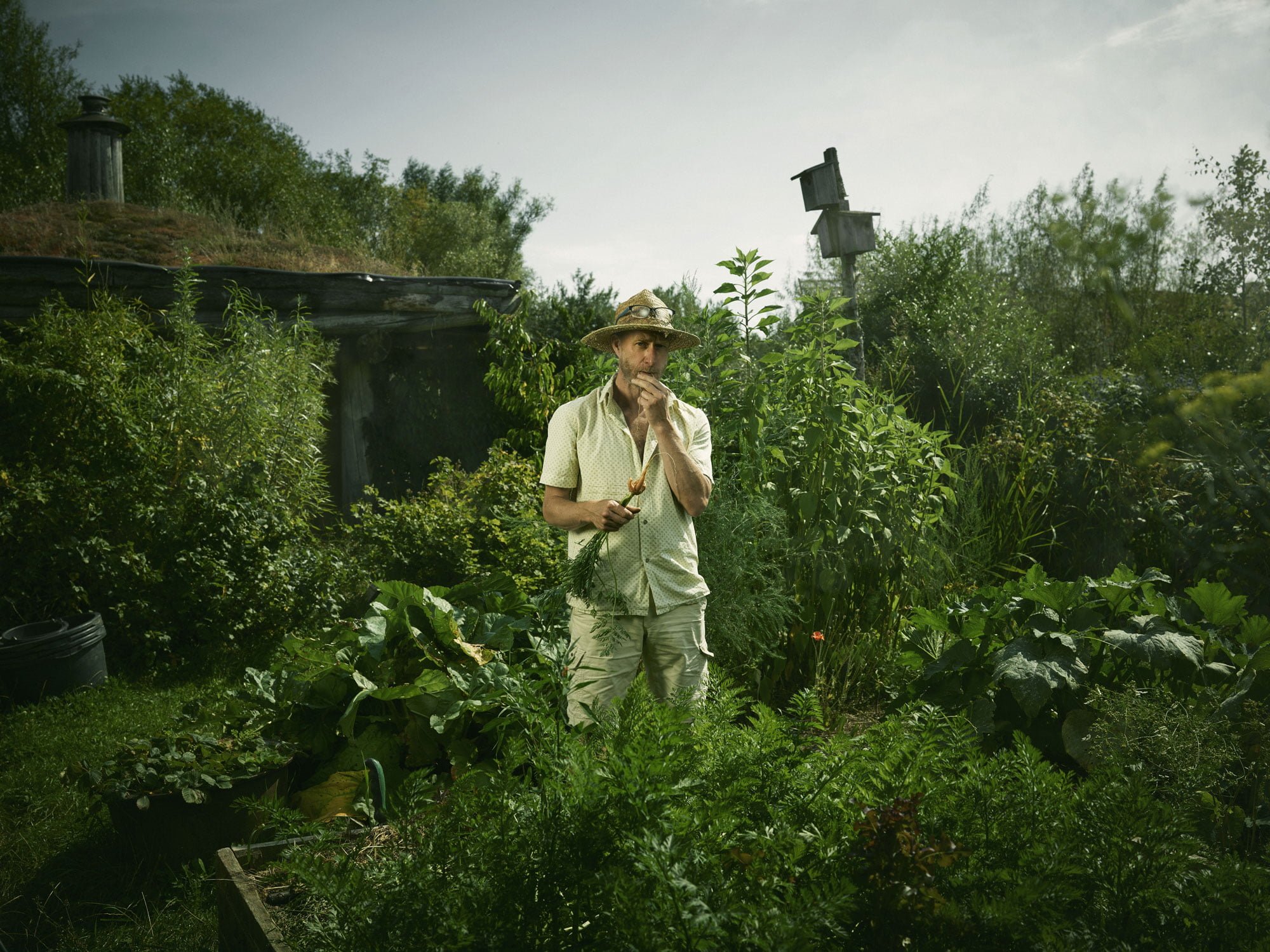The world’s oldest operating planetarium is tucked into a living-room ceiling in a small Dutch town. Constructed in 1781 by a tradesman with more ambition than schooling, this giant wooden machine is as accurate today as it was the day it was finished.
Takeaways
- Dutch wool-comber Eise Eisinga spent seven years building a planetarium in his living room.
- Today it is the world’s oldest working planetarium.
- Every millimetre of ceiling distance represents 1 million kilometres.
- By the age of 15, Eisinga had already written a 665-page book on mathematics and astronomy.
There aren’t many rooms where the ceiling is the primary conversation piece. Yet, the ceiling is exactly what draws tens of thousands of people to a tiny house in the Frisian town of Franeker each year. They come to see the masterpiece of science and craftsmanship that is the oldest operating planetarium in the world, built 239 years ago in the living room of a man named Eise Eisinga.
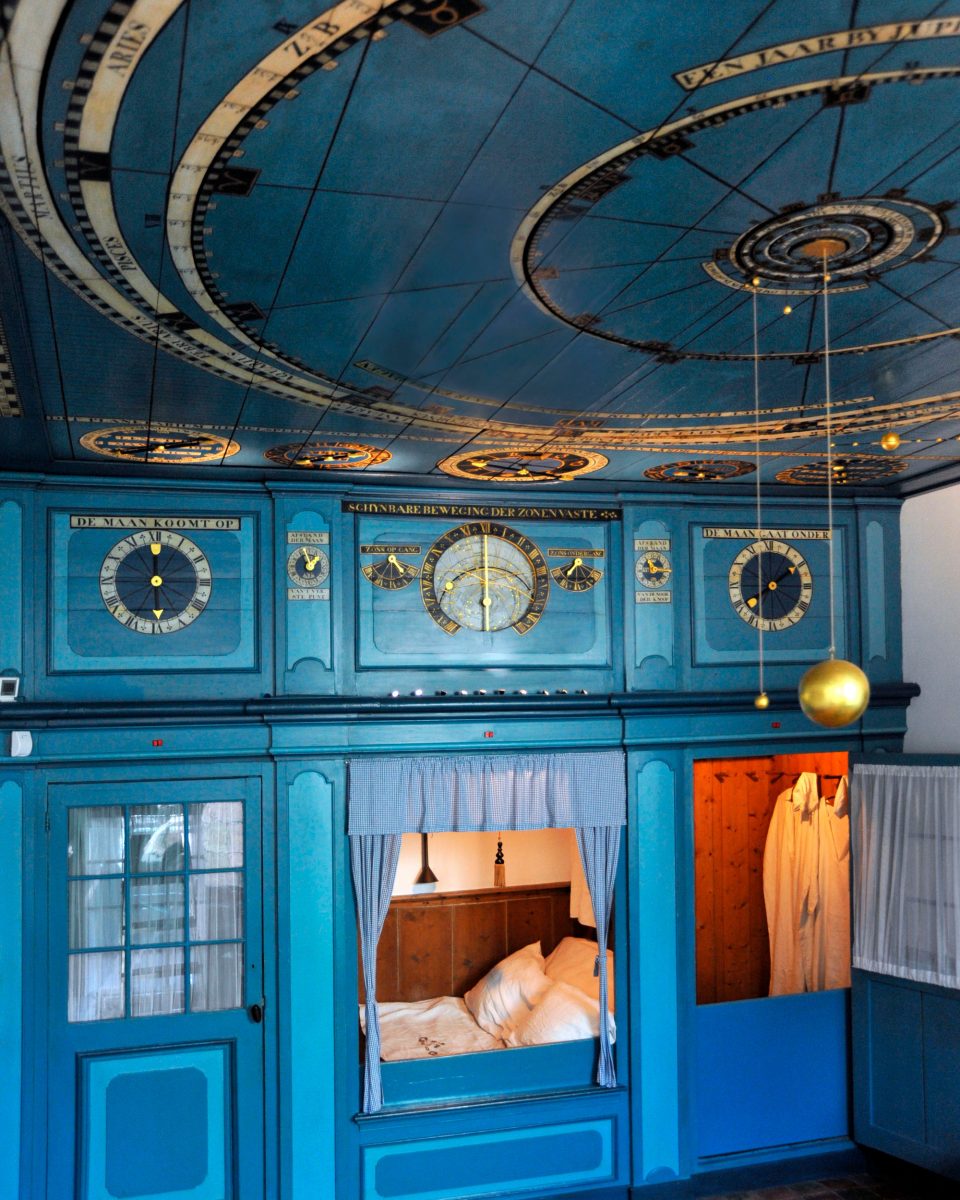
“Our solar system is outlined in gold paint against a vibrant aquamarine-blue backdrop”
The room looks deceptively simple, until you tilt your head back and see our solar system outlined in gold paint against a vibrant aquamarine-blue backdrop. Small balls representing the sun and the earth (with its moon) hang low, the rest of the planets hovering closer to the ceiling. Deep grooves mark their elliptical paths around the sun, lined with notations on time and the constellations.
Adrie Warmenhoven, the current director of the Royal Eise Eisinga Planetarium, uses a long stick to point out dials adorning the top of one wall: “You can see that right now it’s this day, this time, this year.” Each dial has an arrow or other moving part pointing out the current position of the sun, phase of the moon, and more. “When the sun sets outside, you can watch it set right here” – he stabs enthusiastically at the correct dial with his stick – “at the same time. Like clockwork.”
Essentially, this entire room is a clock. It is also a well-preserved time capsule of 18th-century living. There’s a typically truncated bed tucked into the wall below the dials, and a small open kitchen at the other end of the room. All in an area no larger, or even smaller, than most living rooms today.

The attic houses the hidden inner mechanics.
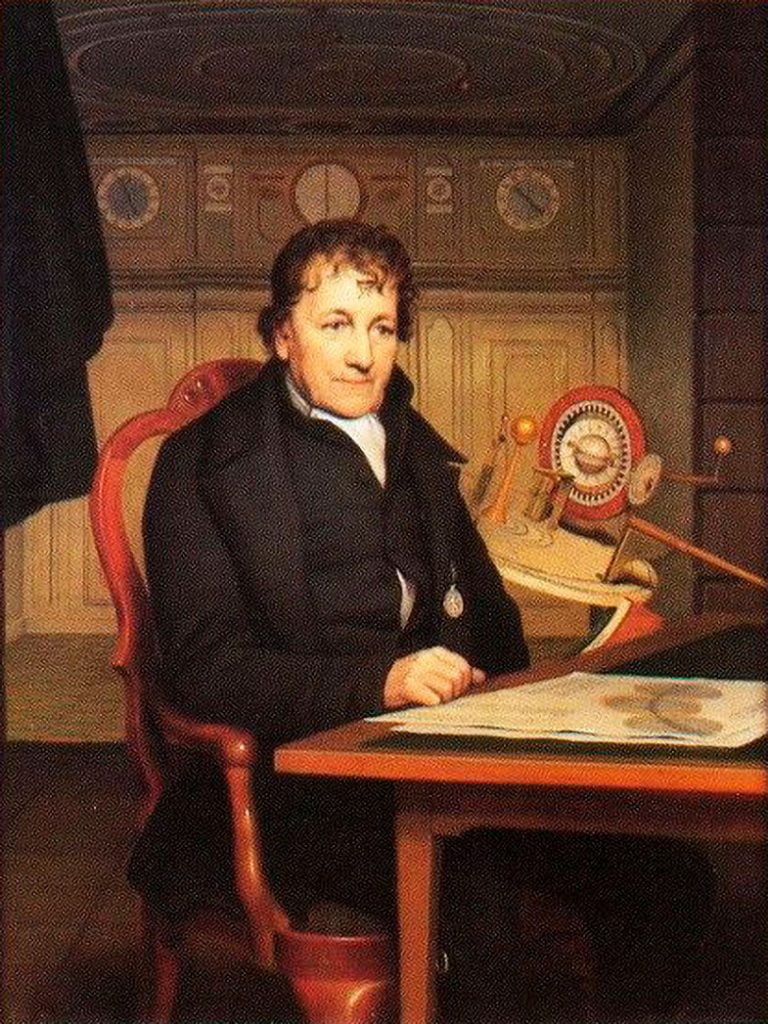
Eise Eisinga was a self-taught scholar.
Aside from the quirk that this clock runs on Old Dutch Time, 40 minutes behind Modern Dutch Time, it is accurate to a T. The planets move at the same rate they do in the cosmos, with the earth completing one full pass around the sun in one year, Mercury in 88 days, and Saturn taking more than 29 years. Only everything is scaled down one trillion times, so that every millimetre of ceiling distance represents 1 million kilometres of outer space. The planets and moons are scaled up so we can see them.
“Ascend the ladder-steep staircase, and you see the machine behind the scenes buzzing with activity”
Stand and stare for just a moment, and it looks as still as a painting. But ascend the ladder-steep staircase just outside the door, and you see the machine behind the scenes buzzing with activity.
A thin spindle acts as the engine, the pendulum of the clock, whipping back and forth like a metronome at 80 beats per minute. The motion keeps time, driving slowly moving wooden-toothed cogs as wide as your forearm along spiky rails extending beyond the edges of the ceiling they control. Around this, hundreds of weights on strings pull gears of all sizes through their leisurely motions, continuing the work they have been doing since 1781.
A doomsday prediction
To most people today, a planetarium is a dome filled with digitally projected stars, where audiences are taken on 3D explorations of the universe. In fact, Warmenhoven explains, a planetarium is simply any model illustrating the movements of the cosmos. Even your phone, stocked with a stargazing app, could technically be considered a planetarium.
“In 1781,” Warmenhoven says, “planetariums were almost always table models. A walk-in planetarium of this scale, where you can see all the information – not only planets, but information about the moon, eclipses, everything – it’s unique.”

A 1824 print by Barentie Willem Dietz. Photo: Alamy
The story goes that Eisinga was inspired to build his masterpiece by a prediction that led to a local panic. On 8 May 1774, there was to be a conjunction of the moon with the planets Mercury, Venus, Mars, and Jupiter. These celestial bodies would appear to overlap in the sky. Today we consider such events interesting but harmless. To Reverend Eelco Alta in 1774, it was the end of the world. He feared that this rare astrological event could knock the earth out of its rotation, throwing our planet into the sun.
Like Eisinga, Alta was from Friesland, the northwesternmost province of the Netherlands. And when his prediction appeared in the local paper, Eisinga’s neighbours got worried.
Eisinga knew there was nothing to fear – and he set out to prove it with the most elaborate model of our solar system the world had yet seen. No matter that it took him seven years to complete this project, finishing long after the conjunction in question. Now that he had a working model, it would be easier to see and show future celestial events, and educate the interested in a more practical way.
The genius drop-out
Eise Eisinga was born 21 February 1744 in a village in the Frisian countryside. The son of a wool-carder (or comber, if you prefer), he was forced to leave school at a young age to begin his trade.
Anywhere else in the world, that might have been the end of his education. Eisinga, however, would go on to write nearly 10 books on advanced mathematics and astronomy, completing the first 665-page tome when he was just 15. “He was a genius,” Warmenhoven says with a tinge of awe.
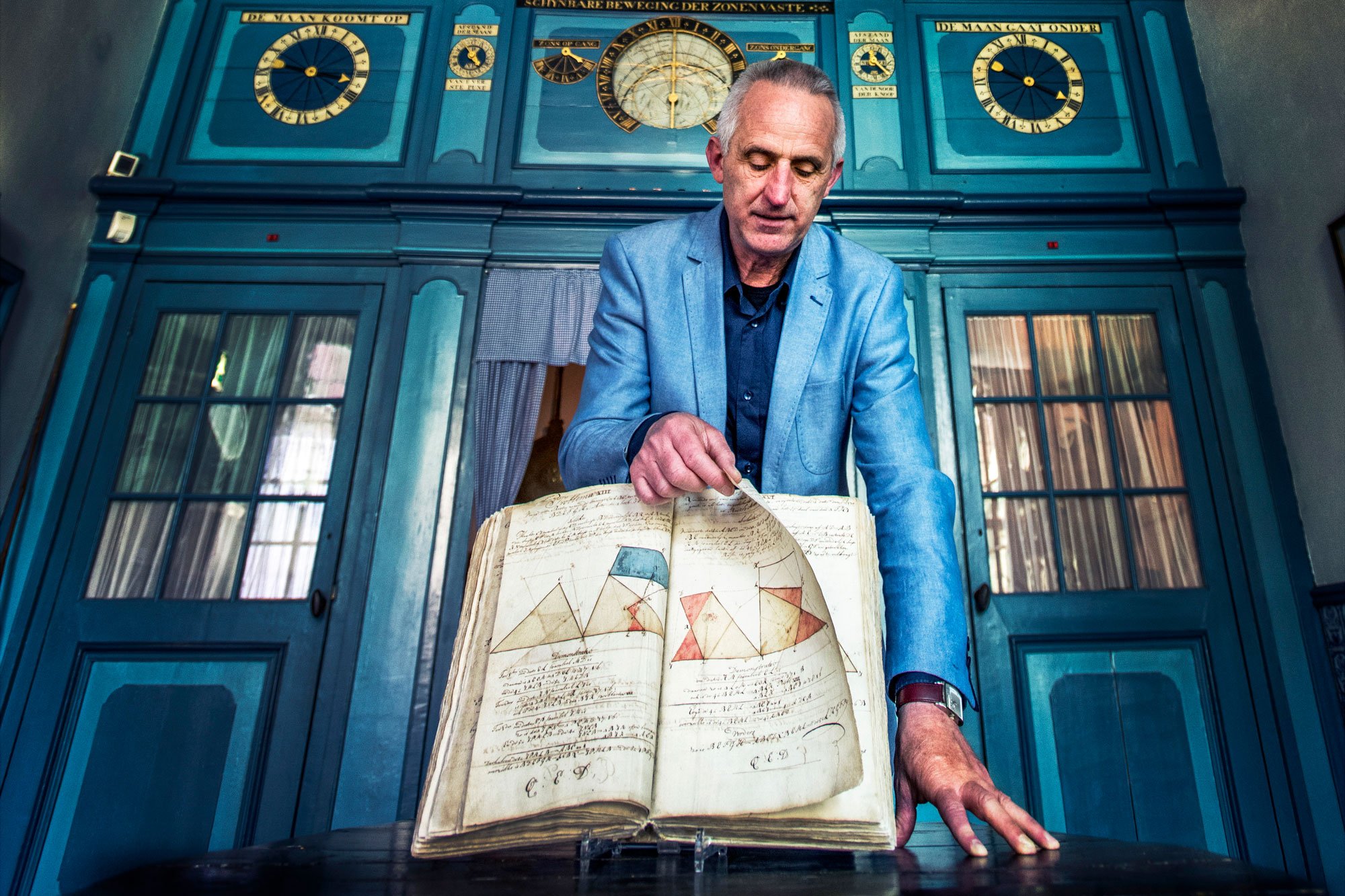
Planetarium director Adrie Warmenhoven with one of Eisinga’s books on mathematics. Photo: Raymond Rutting
“The Netherlands,” Warmenhoven continues, “is a small country with not many inhabitants. But when you see what they achieved in science at that time, it’s remarkable.” Dutch scientists were, for example, central to the development of instruments like the telescope and microscope. And Friesland had one of the highest literacy rates in the world.
Like his day job, Eisinga inherited his interest in maths and astronomy from his father. Once a week, Eisinga would walk an hour and a half each way to the town of Franeker to meet a wool-dyeing colleague, then linger after work was done to pore over books on Euclidean mathematics.
“Franeker was a university town,” Warmenhoven explains, referring to the academy that operated in town from 1585 until 1811. “The information was there. You need access to the books to be able to learn.”
And learn Eisinga did, moving on from Euclid to translate the works of his contemporary Jérôme Lalande and others. He accumulated and recombined the information he absorbed into his own strokes of brilliance.
A family matter
In 1768, 24-year-old Eisinga moved into the house in Franeker that would eventually become his planetarium. His wife got to enjoy six years of relative peace, while Eisinga plied his trade and studied on the side. Then the building began.
Eisinga’s father was his greatest champion. He was the one who shaped many of the machine’s wooden parts, after inventing the central rotating table mechanism that made the whole thing possible.
Not that the construction process went seamlessly. What he had originally estimated would be an eight-month project turned his living room into a seven-year construction zone. Mistakes were made (and learned from) right up to the last step: the installation of the pendulum motor.

The landmark itself has remained virtually unchanged over the years. Photo Bert Knot

An application is underway for UNESCO World Heritage Status. Photo: Wutsje
The pendulum was originally supposed to be just over a metre, the perfect length to move at exactly one tick per second. When it was time to install it, however, Eisinga realised there was not enough space, and he would have to cut a hole in the ceiling above the bed to accommodate it. Eisinga’s wife, by now good and fed up, put her foot down. Eisinga promptly redid his calculations and constructions to make it work without (further) disturbing his wife’s sleep.
Finally, as construction neared completion in 1781, Eisinga got one final surprise: a seventh planet, Uranus, had been discovered. But it was too late. To add Uranus at the current scale, he would have needed twice the ceiling space. If the later-discovered Neptune and Pluto were also added, 25 ceilings of this size would have been needed. (Mrs. Eisinga was assuredly not saddened these adjustments could not be made.)
It was a masterpiece anyway. Soon one of the most lauded mathematical minds of the time – Jean Henri van Swinden, who happened to be a professor at Franeker University – had written a book about Eisinga and his planetarium. When Van Swinden later moved to Amsterdam, he brought Eisinga and his planetarium to the attention of the well-to-do of culture and science there. Eventually this recognition would lead to 40 years of royal sponsorship from King William I himself.
Through all of this, the books, the machine, and later the loss of several of his children and his first wife, Eisinga the self-taught scholar remained an award-winning wool carder, until his death in 1828 at the age of 84.
Eisinga’s legacy
Despite the early royal support, the word “Royal” wasn’t added to the planetarium’s title until then-Queen Beatrix bestowed it in 2006. That same year the planetarium was included in the newly created Canon of Dutch History: the 50 essential elements of Dutch history that must be taught in every school in the Netherlands. The landmark is also in the process of applying for UNESCO World Heritage status, which will finally be considered in 2022, after 18 years of legwork by Adrie Warmenhoven and the planetarium board.

In the meantime, the museum housing the planetarium has tripled in size. “I started in 2001 with only the first house,” Warmenhoven remembers. “There was no cash register, no shop, no computers. The exhibition descriptions were written up on a typewriter.” Warmenhoven knew he could put his 14 years of experience working in Amsterdam’s much larger, modern Artis Planetarium to use. He acquired a second building next door in 2006, a historical coffee roaster with a 1910 Art Deco interior that, along with a lush inner courtyard space, now acts as the museum café. In 2016 he added a third building, which now hosts an extensive interactive exhibition on space and astronomy.
Always, of course, ensuring that the planetarium keeps ticking forward as Eisinga intended. “We maintain it by pulling up the weights and cleaning it every year, removing the dust,” Warmenhoven explains. “We make a special kind of wax to treat the wooden material. And the clock needs to be adjusted a few times a year due to temperature changes.”
Luckily Eisinga created a detailed manual for his own children, directing how they should keep his masterpiece alive after his death. (The building stayed in the family until 1922.) The manual covers everything from this regular maintenance to how to account for leap years.
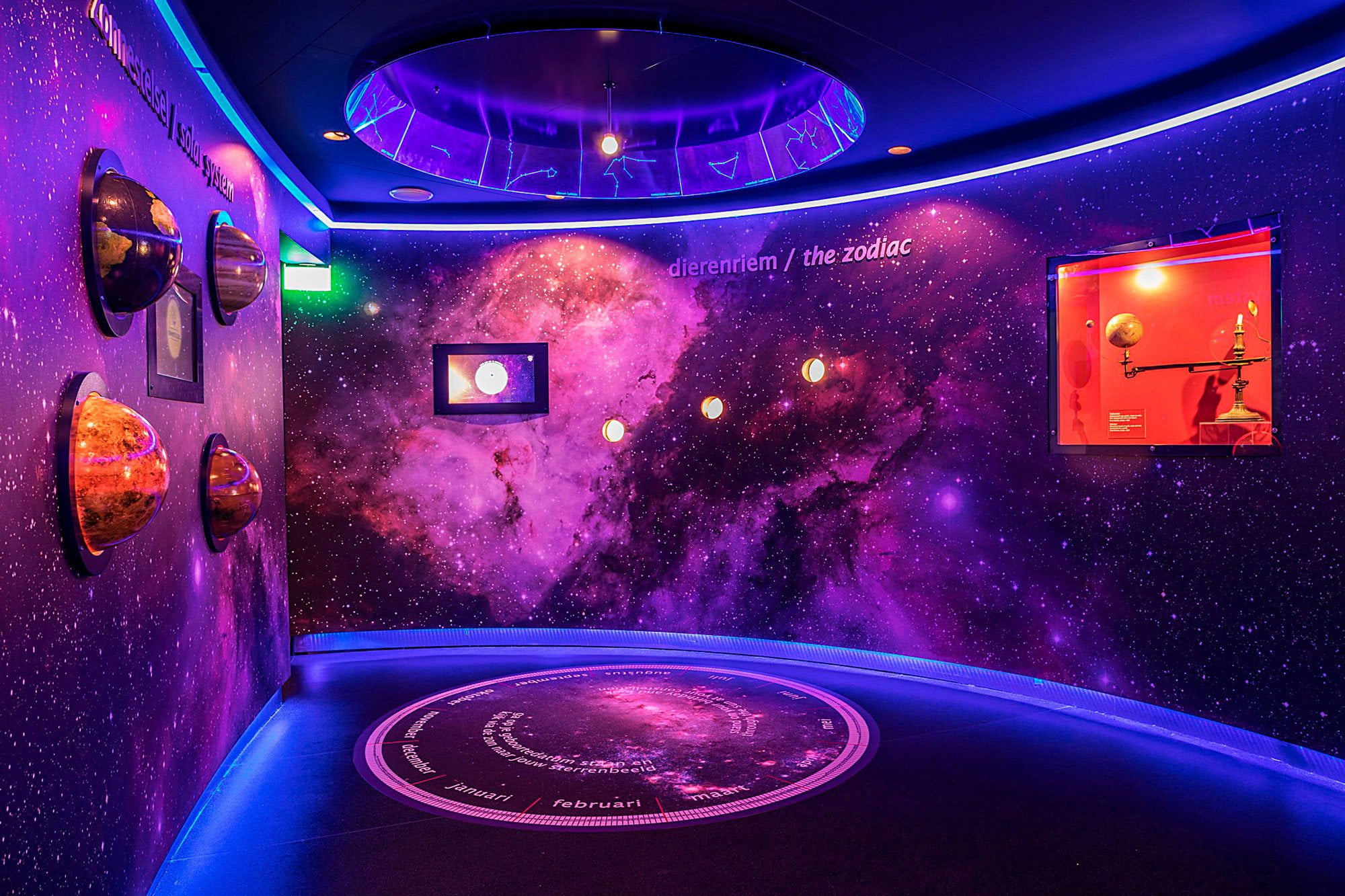
A modern, interactive exhibit brings the solar system to life.
Warmenhoven chalks up the planetarium’s continued survival, through wars and fires, to “luck, simple luck.” Today this unique piece of history in this far-flung Dutch outpost has grown to become a popular attraction. In his 19 years of stewardship Warmenhoven has more than doubled attendance, bringing it to a high of 65,000 in 2019. That is six times the population of the town of Franeker. Elsewhere, you’ll find exhibitions on the planetarium in museums from England to Japan, and a smaller “copy” in a living room in Oud-Zuilen, the Netherlands.
UNESCO World Heritage status or not, the planetarium’s star power continues to rise. For example, one of those 65,000 visitors was author Dan Brown, who got a private tour from Warmenhoven. “I didn’t want to ask him if he was working on a book,” Warmenhoven confesses, “But … who knows!”
The Royal Eise Eisinga Planetarium & Museum is open to visitors, who are currently required to make a reservation in advance due to coronavirus concerns. Visit www.planetarium-friesland.nl for more information.
